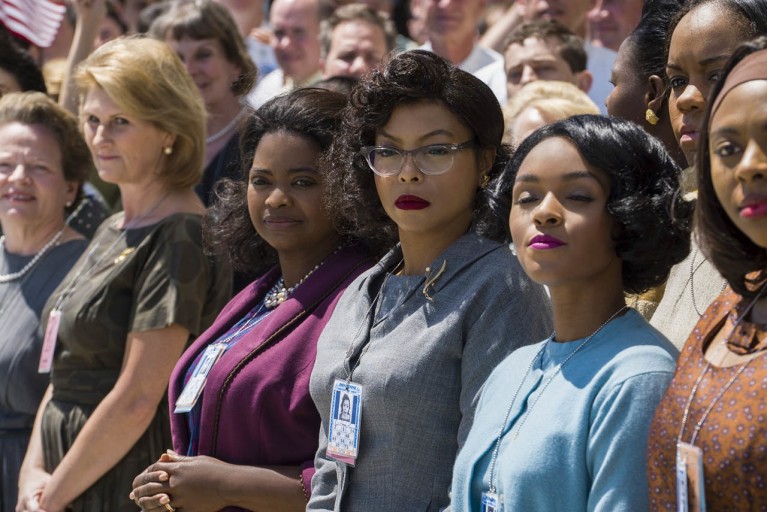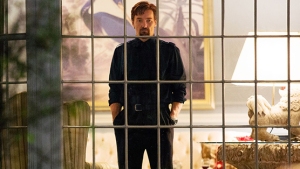10. The Lobster
This surreal dystopian drama from Yorgos Lanthimos thrives on its unique concept: single people are arrested and sent to a hotel, where they have 45 days to fall in love, lest they be turned into the animal of their choice and forced to live in the woods. Those that doubt Colin Farrell’s acting ability can look to his lead performance here as proof that he is adept given the right script. The supporting cast, including Rachel Weisz, Lea Seydoux and John C. Reilly, is also brilliant. This is a thoughtful examination of modern ideas on romance and self, equal parts humorous and sorrowful. This film is not for everyone, but those eager to embrace a strange melancholy and an ambiguous ending should check it out.
9. Zootopia
In 2016, Disney put Pixar to shame with a surprisingly poignant and timely story tailor-made for the current political climate. Finding Dory was good (although clearly a shameless cash grab), but Zootopia was great. The animation is some of the best I’ve ever seen, with an amazing level of detail down to the very hairs on each animal. This is a bold film by Disney standards, one that encourages dialogue between people with different backgrounds and opinions in such a way that works for all ages. Kids will love the cute animals and funny voices, and adults can appreciate those aspects coupled with the fact that it’s not talking down to us.
8. Hidden Figures
This is another film that I consider necessary viewing right now. I was skeptical going into the theater, given the film’s cheesy marketing and PG rating, which I feared might mean that it presents a sanitized account of history. But it’s undoubtedly a hard-hitting drama that serves as a powerful reminder of what women and minorities experience, and its relevance in 2017 cannot be ignored. The performances drive the film and deserve praise across the board, especially with Taraji P. Henson’s lead role offering some beautifully captivating moments throughout. The fact that the Academy snubbed her this year is a travesty.
7. Kubo and the Two Strings
One of the most purely creative films of the year, Kubo’s stop-motion animation is insanely impressive, and its emotional fantasy journey is equally worthwhile. This is a deep and surprisingly dark family film, and its themes of parental love and coping with loss are potent. The voice cast, including Charlize Theron, Rooney Mara and Matthew McConaughey, is memorable. And damn, I still just can’t get over how beautiful is it to look at.
6. Sing Street
Director John Carney wowed me with 2007’s bittersweet Once, and he once again mixes music and heart into something memorable with Sing Street. The Irish Catholic backdrop meshes successfully with the film’s underlying sense of humor. The soundtrack, which combines ‘80s anthems with some memorable original songs, stands out on its own. The ending wanders into painfully cheesy territory, but overall this celebration of music, youthful innocence and individuality is equal parts catchy and substantial.
5. Lion
This film caught me off guard. The true story, about an Indian boy named Saroo who is separated from his family and tries to reunite with them as an adult, is impressive in the way it balances its large scale and intimate emotions. To my surprise, the film spends roughly half its runtime focusing on Saroo as a child, and young actor Sunny Pawar is surprisingly capable under the weight of such a heavy drama. Dev Patel’s turn as adult Saroo is also gut-wrenching, and supporting performances from Rooney Mara and Nicole Kidman add further gravitas to this powerful story. Lion is heartbreaking, enthralling and exhilarating, often all at the same time. And it serves as an important look at a way of life that can seem so far away here in the U.S.
4. Moonlight
The rawest film of the year, Moonlight is often difficult to watch. But this deeply personal exploration of a young black man growing up in Miami is arguably the most significant film of the year. The epic story—following a man named Chiron across three distinct periods of his life—masterfully addresses so many important topics: race, masculinity, homosexuality, poverty, substance abuse, the importance of father figures. All three actors who portray the man character—the child, the teen and the adult—embody him with unprecedented realness, and watching them struggle through such a harrowing life is captivating and draining. Mahershala Ali’s supporting performance as a drug dealer that takes Chiron under his wing is relatively brief, but his presence resonates through the entire film and long after the credits roll. Barry Jenkins’ confident direction and obvious passion permeate every scene and every shot of this film. Moonlight is the type of story that is far too often and easily overlooked, but it’s important, necessary and beautifully crafted.
3. Arrival
Denis Villeneueve is quickly becoming one of my favorite directors, with both Prisoners and Sicario being two of the most intense dramas in recent memory. His foray into science fiction does not disappoint. The story, which focuses on a linguist (Amy Adams) trying to decipher an alien language before war erupts, is a slow burn that might turn off some viewers. But the payoff is utterly brilliant, with what might be my favorite ending of 2016. The film deals with love, the passage of time and the implications of cultural differences with elegance. Adams’ performance is amazing, and her Oscar snub is an Academy blunder on par with Taraji in Hidden Figures. Arrival is must-see sci-fi.
2. The Witch
This is the kind of horror movie that comes maybe once a year and really moves the genre forward. Its authentic colonial setting and beautifully bleak cinematography complement each other well. Some scenes are difficult to watch, and the entire film is deeply unsettling. But its exploration of humanity’s demons and our relationship with a higher power is profound. And the film passes the real test of any scary movie. It stuck with me after I left the theater and long into the night.
1. La La Land
If you’ve ever been in love or had grand, crazy dreams, La La Land will speak to you. It’s a near-perfect film that is by far the most magical time at the theater that I have experienced this year. It’s a rousing tribute to the power of film and music and the artists behind them. It’s a raw love story, complete with the requisite pure joy and harrowing sadness that must accompany it. It’s a beautiful work of art that I cannot recommend enough. It’s the happiest movie in recent memory, as well as the saddest. But ultimately, it’s a stirring celebration of life. It’s a wonderful whirlwind of emotions and song and color, one that benefits from the theater experience, shared with an audience equally at the mercy of the big screen and elaborate sound system. Unless you absolutely hate musicals, La La Land demands to be seen.










